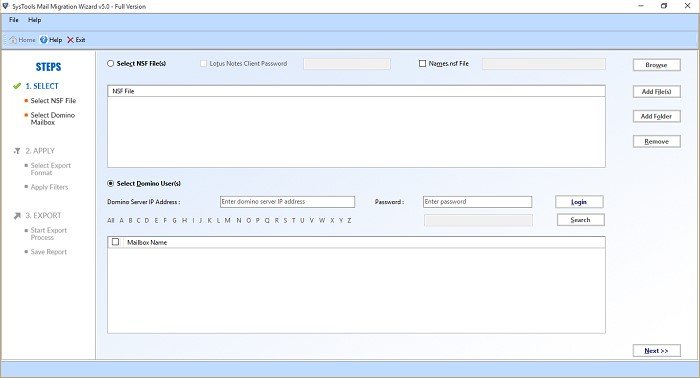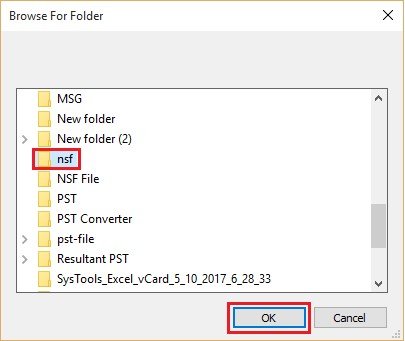Summary:
This article describes the step by step procedure of Lotus Notes to Exchange 2016, 2013, 2010 migration. The users who are not technically sound and looking for a trouble-free solution to import NSF file to Exchange in just few clicks.
A lot of users nowadays are coming up with a recurring query i.e. How to migrate Lotus Notes to Exchange? As many organizations are switching their email communication platform to Microsoft Exchange as it is less complex than IBM Notes. Furthermore, the operating cost of the Notes platform is high as compared to Exchange. So, many organizations prefer moving NSF to the Exchange platform.
Here, we have also shared some common user queries that explain the problems that users face while looking for a trusted and reliable solution for migration.
“Our organization is switching our email platform to MS Exchange. Currently, we are working on Lotus Notes. I am a part of this project as I have worked on the Exchange platform a few years ago. Now, we are looking for an error-free and efficient solution to migrate Lotus Notes to Exchange using which we move our entire data to the latter platform. We have 800+ users in our organization and want to transfer all mailbox items to MS Exchange. Can anyone suggest us some third-party application to complete the task?”
After reading the aforementioned query by a user, we can imagine the complexity of the conversion process as users can lose their crucial data if they don’t choose any reliable solution for it. But, before directly jumping to the solution, let us first discuss the benefits of moving NSF file data to the Exchange platform.
Benefits of NSF to Exchange Migration
- Access to Cloud Network – Using Microsoft Exchange for email communication makes it easy for the users to move the organization’s data to the cloud. This option proves handy as users get the option to access it from anywhere.
- Less Complex – After switching your email platform into MS Exchange, it becomes easy for the users to access and use the platform.
- Data Backup – The users don’t have to worry about their data after migration. Exchange periodically backup all the emails without affecting your work.
- Accessible from Everywhere – Another useful feature of Microsoft Exchange offers you to synchronize and access data on the laptop, smartphone, tablet, etc. Moreover, the data can be accessed from anywhere and anytime.
There is ‘n’ number of benefits when you migrate Lotus Notes to Exchange 2016, 2013, 2010, and its lower versions. After knowing all the advantages of the latter platform, let us now find out the method of NSF to MS Exchange migration process.
Lotus Notes to Exchange Migration – Quick & Efficient Solution
Switching from one email communication platform to another is a cumbersome process as moving email messages and other mailbox data is a crucial process. There are chances of data loss as well so choosing a reliable and trusted solution is really important. So, users are suggested to go for SysTools Mail Migration Wizard as it makes the whole process simple.
This Domino to Exchange Migration Tool makes sure that users get their complete data on the destination platform without any hassle. Additionally, the simple and user-friendly graphical interface enables non-technical users to use the tool. The wide range of features such as support for various calendar recurrences, conversion of encrypted messages and many more makes the application unique and reliable. Some of the features of the software are listed below:
- Migrate Lotus Notes emails, calendar, contacts to MS Exchange
- Advanced enough to Convert Encrypted Messages
- Option for Batch migration to export users in bulk
- Support for date filter to transfer selective data into Exchange mailbox
- Eliminate duplicate contacts during NSF to Exchange migration
- Option to Include specific folder(s) while conversion
Steps to Migrate Lotus Notes to Exchange 2016, 2013, 2010
- Download & Run SysTools Mail Migration Wizard.

- Click on Add File(s) or Add Folder button to add NSF files into the software.

- Click on the Browse button and go to the destination location where NSF files are stored.

- Now, select Exchange as an export option in this window.

- Here, you must enter the Admin credentials and IP Address of the Exchange server and click on the Submit button.

- You can apply the date filter as per your requirement on various mailbox items.

- Click on Apply Advance Options in the software and then press the Export button to start migrating NSF to Exchange.

- Once the migration gets completed, click the OK button.

Manual & Free to Use Solution
There is a free and manual process i.e. Microsoft Transport Suite as well which is offered by Microsoft itself to migrate Lotus Notes to Exchange platform. This method is time-consuming as compared to the above-mentioned efficient solution and it requires a good level of technical skills as well. Moreover, it does not work with the latest Exchange versions.
Challenges Faced While Using Manual Method
There are some limitations associated with the manual procedure which makes it important for the users to go for the third-party application. Some of those limitations are listed below:
- Time-consuming, long and complex method
- Mailboxes larger than 1GB in size are not migrated
- Number of emails in folders should be less than 1500
- The more complex process if users want to perform bulk migration
- Supports older versions of Exchange for conversion
- Chances of data loss are more as compared to the third-party application
- Requires technical knowledge to carry out the process
As there are so many limitations with the manual method offered by Microsoft, it is suggested to use the professional solution to migrate NSF to Exchange. Using the third-party application will make the whole process a lot easier and there are no chances of data loss as well.
Conclusion
A user needs to be very careful while moving data from one platform to another. Any data loss during the conversion process can lead to various issues. Therefore, it is suggested to go for the professional solution as suggested by many experts i.e. SysTools Lotus Notes to Exchange Migration Wizard.
A manual process is also mentioned in the article, but it is time-consuming and prone to data loss as well.

